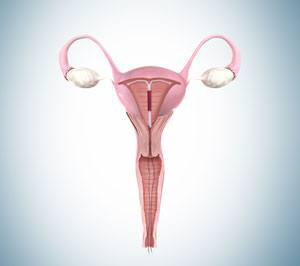Intrauterine Device (IUD)

What is an Intrauterine Device (IUD)?
An intrauterine device (IUD) is a small T-shaped plastic contraceptive device inserted through the opening of your cervix into your uterus by your gynecologist, in a procedure that takes less than 5 to 10 minutes. It has a string attached at the end, which hangs into the vagina to help you check that it is in place. You should check for the string after each period and after sexual intercourse. The IUD is a longer-lasting form of contraception and can stay in place for 3–10 years.
Types of IUDs
Non-hormonal Copper IUD
This IUD is made with copper and plastic and contains no hormones. The copper acts as a spermicide, killing any sperm. It can prevent pregnancy as soon as it is placed by stopping sperm from reaching and fertilizing an egg. It provides protection for up to 10 years.
These are one of the most effective emergency contraceptive devices when used within five days of unprotected sex.
Hormonal IUDs
Hormonal IUDs are effective for 3 to 5 years, depending upon the type used. They contain the hormone progestin. Progestin prevents pregnancy by thickening the cervical mucus and thinning the lining of the uterus, thus stopping the sperm from reaching and fertilizing an egg. Hormonal IUDs are not an emergency contraceptive device.
Before your IUD
Before inserting an IUD, your doctor will perform a pelvic examination to assess the size, shape, and depth of your uterus. You may also be tested for any sexually transmitted infections. Your doctor will place the IUD through the cervix and into your uterus. Depending on the type, you may have to use alternative birth control for a short period of time. You may notice slight discomfort, mild cramping, and bleeding for the first 1–2 days. It should be noted that IUDs do not provide protection against STDs or HIV. Irregular bleeding may occur up to 3 months. Your IUD can be removed by your doctor at any time and you can get pregnant as soon as it is removed.
Advantages of an IUD
Advantages include:
- Long- acting and reversible - Prevents pregnancy for 3 to 10 years, depending on the type
- Lower risk of systemic side effects, such as headaches, acne or breast tenderness
- Safe to use while breastfeeding
- Can get pregnant as soon as it is removed
- High effectiveness level
- May decrease heavy bleeding or painful menses (depends on type)
Disadvantages of an IUD
Disadvantages include:
- Irregular bleeding or cramping for the first few months
- May increase heaviness of menstrual bleeding (depends on type)
- Do not provide protection against STIs/STDs
- May contribute to recurrent vaginal infection
- Increased risk of ectopic pregnancy if became pregnant with in place
- May be misplaced, necessitating surgery (rare)
Risks and Complications of an IUD
As with any procedure, IUDs may also be associated with certain risks and complications which include pelvic infections, expulsion of the IUD by the uterus, or displacement of the IUD. This can cause damage to the uterus and there may be an increased risk of ectopic pregnancy if the IUD fails and you become pregnant.
Related Topics
- Colpocleisis
- Pessary Fitting
- Clomid/Letrazole
- Uterine Septoplasty
- Office Hysteroscopy
- Cervical Biopsy
- Colposcopy
- Endometrial Ablation
- Endometrial Biopsy
- Excision of endometriosis
- Laparoscopy
- Hormone Replacement Therapy (HRT)
- Hysterectomy
- Hysteroscopy
- Intrauterine Device (IUD)
- Laparoscopic Ovarian Cystectomy
- LEEP
- Mona Lisa Touch
- Myomectomy
- Nexplanon
- Pre-conception Planning
- Robotic-Assisted Gynecology Surgery
- Sterilizations
- In-office Ultrasound
- In-office Procedures
